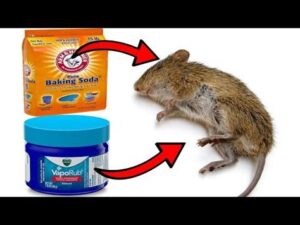Imagine this: you’re settling into bed after a long, exhausting day. Just as you’re about to drift off, faint scratching sounds echo through the walls. At first, you think it’s your imagination. But then it happens again—louder this time. Your heart sinks as you realize your home has been invaded by rats or mice. These uninvited guests are more than just an annoyance. They carry diseases, chew through wires, and leave droppings everywhere they go. Worst of all, they make you feel unsafe in your own space.
But before you panic and reach for chemical-laden traps or toxic baits, take a deep breath. There’s a better way to reclaim your peace of mind. You can get rid of rats and mice in your home naturally without harming your family, pets, or the environment. This guide will walk you through every step of the process, offering practical, eco-friendly solutions that actually work.

Why Natural Methods Are the Best Choice
The Dangers of Chemical Rat Control
You might be tempted to grab the nearest rodenticide from the store, but let’s talk about why that’s not always the best idea. Many chemical rat poisons contain ingredients that are highly toxic—not just to rodents, but to other living creatures too. Pets and children are especially vulnerable if they accidentally ingest these poisons. Even worse, when poisoned rodents die outdoors, predators like birds of prey or neighborhood cats may consume them, spreading toxins further up the food chain.
Additionally, chemical treatments often come with environmental consequences. Many rodenticides are non-biodegradable, meaning they linger in the soil and water systems for years. Some studies even suggest that rodents can develop resistance to these chemicals over time, making them less effective in the long run.
Benefits of Natural Pest Control
Switching to natural methods offers a host of advantages. First and foremost, they’re safe for your loved ones and pets. Natural solutions typically rely on ingredients you already have at home, such as essential oils or pantry staples, which means they’re cost-effective too. Plus, many natural strategies focus on prevention rather than quick fixes, helping you avoid future infestations altogether. By choosing eco-friendly options, you’re also doing your part to protect the planet while keeping your home pest-free.
Identifying the Signs of a Rodent Infestation
Before diving into how to eliminate rodents, it’s crucial to confirm whether you actually have an infestation. Here’s what to look for:
What to Look For
- Droppings : If you spot small, pellet-like feces near food sources, hidden corners, or along baseboards, chances are good that rodents are present.
- Gnaw Marks : Chewed wires, furniture, or packaging materials are telltale signs of their activity.
- Noises : Squeaking, scratching, or scurrying sounds, particularly at night, indicate active rodent movement.
- Nests : Rodents build nests using shredded paper, fabric, or insulation. Check dark, secluded areas like attics, basements, and behind appliances.
Common Entry Points
Rodents are sneaky little creatures. They only need a gap as small as ¼ inch to squeeze into your home. Pay close attention to:
- Cracks in walls, doors, or windows.
- Gaps around plumbing and electrical lines.
- Vents without proper mesh covers.
Pro Tip: Conduct a thorough inspection of your home’s exterior and interior. Use a flashlight to peer into tight spaces where rodents might hide.
1: Seal Off Entry Points
The first step in getting rid of rats and mice is cutting off their access to your home. Once inside, these critters can wreak havoc, so sealing entry points should be your top priority.
Tools You’ll Need
To seal effectively, gather the following supplies:
- Steel wool (rodents can’t chew through it).
- Caulk or expanding foam.
- Mesh screens for vents and chimneys.
How to Seal Effectively
- Inspect Thoroughly : Walk around your house and identify any cracks, gaps, or holes larger than ¼ inch. Don’t forget to check the roofline, foundation, and utility line entrances.
- Use Steel Wool : Stuff steel wool into small openings. It’s durable, affordable, and nearly impossible for rodents to gnaw through.
- Apply Caulk or Foam : After inserting steel wool, seal the area with caulk or expanding foam for added protection.
- Install Mesh Screens : Cover vents, chimneys, and other potential entryways with fine mesh screens.
By blocking off these pathways, you’ll prevent new invaders from entering while forcing existing ones to leave in search of easier targets.

